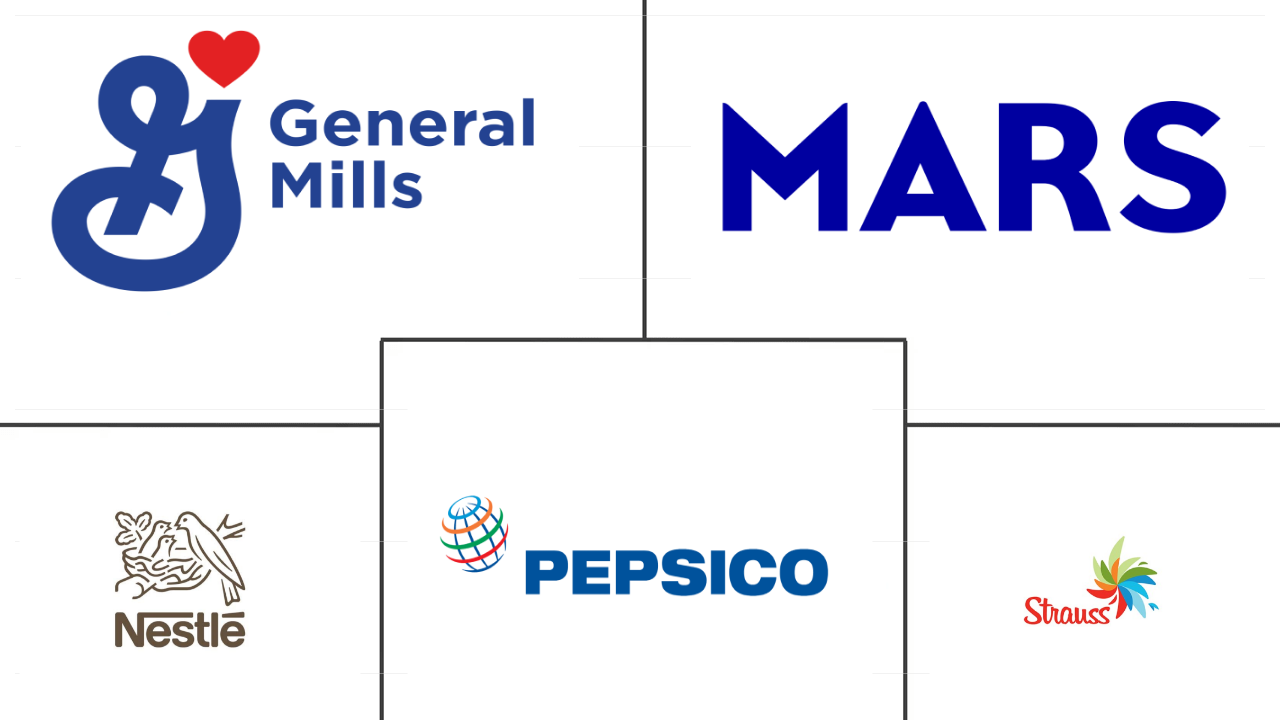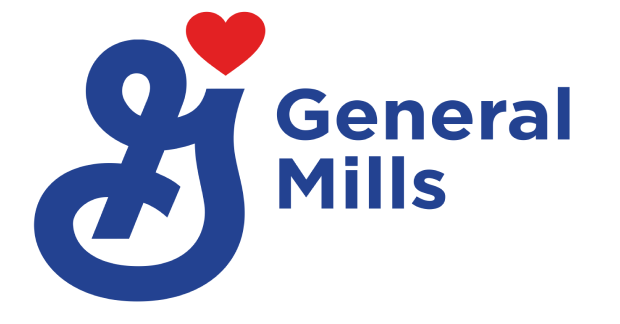Market Size of middle east snack bar Industry
|
|
Study Period | 2018 - 2030 |
|
|
Market Size (2024) | USD 289.67 Million |
|
|
Market Size (2030) | USD 409.56 Million |
|
|
Largest Share by Distribution Channel | Convenience Store |
|
|
CAGR (2024 - 2030) | 5.94 % |
|
|
Largest Share by Country | United Arab Emirates |
Major Players |
||

|
||
|
*Disclaimer: Major Players sorted in no particular order |
Middle East Snack Bar Market Analysis
The Middle East Snack Bar Market size is estimated at 289.67 million USD in 2024, and is expected to reach 409.56 million USD by 2030, growing at a CAGR of 5.94% during the forecast period (2024-2030).
289.67 Million
Market Size in 2024 (USD)
409.56 Million
Market Size in 2030 (USD)
3.27 %
CAGR (2018-2023)
5.94 %
CAGR (2024-2030)
Largest Segment by Confectionery Variant
79.29 %
value share, Cereal Bar, 2023
Bars with pro-health ingredients are considered to be the healthiest, making sales for products like cereal bars with their high suitability for various types of consumers.
Largest Segment by Distribution Channel
59.40 %
value share, Convenience Store, 2023
Local strategic partnerships and acquisitions to enable product differentiation and variability coupled with product positioning made convenience stores the major segment.
Fastest-growing Segment by Confectionery variant
8.23 %
Projected CAGR, Protein Bar, 2024-2030
Increased fiber content in fruit & nut bars, with various dried fruits and nuts with healthier unsaturated fats, is expected to make it the fastest-growing segment in future.
Fastest-growing Segment by Distribution Channel
6.99 %
Projected CAGR, Online Retail Store, 2024-2030
The ease of shopping experience through online channels and increasing number of retailers present in this channel has become the major driver in the segment in the region.
Leading Market Player
20.87 %
market share, General Mills Inc., 2022

General Mills Inc. gained a competitive edge due to its extensive product portfolio, wider brand presence, and strategic moves toward innovation in flavors, and ingredients.
Convenience stores account for more than 50% market share as consumers are inclined toward convenient and in-person shopping at discounted offers
- In the Middle East, the overall retailing segment maintained a growth of 4.87% in 2023 compared to 2022. The growth is anticipated with the consumers' growing inclination for convenience shopping facilities in the market. Aspects such as rising interest in in-person shopping and demand for discount offers, etc., are likely to drive the retailing industry drastically. During 2024-2027, it is estimated that the overall retailing unit in the Middle East will attain a growth of 6.10% by volume share.
- Under the overall retailing segment, the convenience store segment was considered the largest retailing unit by volume in 2023 because of its establishment in prime locations. Some of the famous stores are Meed Murabbah, KSA, You Mart, etc. By 2026, the convenience store segment in this region is estimated to preserve a growth of 5.42% by volume share compared to 2025.
- Supermarkets and hypermarkets are marked as the second-largest units in the Middle Eastern snack bar industry. These stores tend to offer a wide range of snack bar products with innovative offers for their customers. It is reported that the sales volume of snack bar products in supermarkets and hypermarkets grew by 4.18% in 2022, and it is anticipated to register a CAGR of 19.7% during 2026-2028 in the Middle East.
- Online retailing or e-commerce retailing is considered the fastest-growing retailing unit in this region. The e-commerce business held a CAGR of 6.32% from 2023. The major aspect influencing the acceleration of e-commerce websites is associated with the greater convenience offered by these websites, such as at-home shopping and 24*7 product purchasing options. In addition, the increasing number of internet users is expected to drive this industry significantly.
With more than 70% of the region's consumers willing to spend on health and wellness, Middle East has observed a surge in the market growth
- In the Middle East, the snack bar segment witnessed a favorable growth rate of 5.8% in 2023 compared to 2022, primarily growing consciousness among consumers about healthy eating trends together with a significant presence of youth and working consumers who have a hectic lifestyle. Also, many people count calories while eating and plan their menu accordingly to maintain a healthy lifestyle. In 2023, about 70% of the consumers in the region were willing to increase their spending on health and wellness as they become more health-conscious following the prevalence of ailments and adulteration.
- By country, Saudi Arabia holds the major share in the region supported by the highest consumption of snack bars in the market, registering a Y-o-Y growth rate of 4.22% in 2023, relative to 2022. Among all the available snack bar variants, consumers in the market perceive protein bars as healthier than any other product that is fortified with protein. In order to increase the sales of snack bars in Saudi Arabia, manufacturers are providing innovative flavors such as the incorporation of alternative protein sources like insects, soy, peas, and other plant-based proteins. Apart from the taste and nutritional benefits of the snack bars, makers are focusing on better communicating the product benefits through clean labeling and innovative packaging efforts.
- Oman is likely to be the fastest-growing segment and is expected to achieve a value growth rate of 9% in 2030 compared to 2024, and it is likely to attain a CAGR of 7.8% during the forecast period. The snack bar sector in the country is experiencing rapid growth due to the evolving lifestyle and consumer preferences, as well as the influence of Western culture in terms of food choices.
Middle East Snack Bar Industry Segmentation
Cereal Bar, Fruit & Nut Bar, Protein Bar are covered as segments by Confectionery Variant. Convenience Store, Online Retail Store, Supermarket/Hypermarket, Others are covered as segments by Distribution Channel. Bahrain, Kuwait, Oman, Qatar, Saudi Arabia, United Arab Emirates are covered as segments by Country.
- In the Middle East, the overall retailing segment maintained a growth of 4.87% in 2023 compared to 2022. The growth is anticipated with the consumers' growing inclination for convenience shopping facilities in the market. Aspects such as rising interest in in-person shopping and demand for discount offers, etc., are likely to drive the retailing industry drastically. During 2024-2027, it is estimated that the overall retailing unit in the Middle East will attain a growth of 6.10% by volume share.
- Under the overall retailing segment, the convenience store segment was considered the largest retailing unit by volume in 2023 because of its establishment in prime locations. Some of the famous stores are Meed Murabbah, KSA, You Mart, etc. By 2026, the convenience store segment in this region is estimated to preserve a growth of 5.42% by volume share compared to 2025.
- Supermarkets and hypermarkets are marked as the second-largest units in the Middle Eastern snack bar industry. These stores tend to offer a wide range of snack bar products with innovative offers for their customers. It is reported that the sales volume of snack bar products in supermarkets and hypermarkets grew by 4.18% in 2022, and it is anticipated to register a CAGR of 19.7% during 2026-2028 in the Middle East.
- Online retailing or e-commerce retailing is considered the fastest-growing retailing unit in this region. The e-commerce business held a CAGR of 6.32% from 2023. The major aspect influencing the acceleration of e-commerce websites is associated with the greater convenience offered by these websites, such as at-home shopping and 24*7 product purchasing options. In addition, the increasing number of internet users is expected to drive this industry significantly.
| Confectionery Variant | |
| Cereal Bar | |
| Fruit & Nut Bar | |
| Protein Bar |
| Distribution Channel | |
| Convenience Store | |
| Online Retail Store | |
| Supermarket/Hypermarket | |
| Others |
| Country | |
| Bahrain | |
| Kuwait | |
| Oman | |
| Qatar | |
| Saudi Arabia | |
| United Arab Emirates | |
| Rest of Middle East |
Middle East Snack Bar Market Size Summary
The Middle East Snack Bar Market is experiencing a robust expansion, driven by a growing consumer preference for convenient and health-oriented food options. The market is characterized by a diverse range of snack bar products, including protein bars, which are gaining popularity due to their perceived health benefits. This trend is supported by a significant youth demographic and a workforce with busy lifestyles, who are increasingly conscious of their dietary choices. The retail landscape in the region is evolving, with convenience stores, supermarkets, and e-commerce platforms playing pivotal roles in the distribution of snack bars. The convenience of online shopping and the rise in internet penetration are particularly contributing to the rapid growth of e-commerce retailing.
Saudi Arabia stands out as a key player in the region, with a substantial share of snack bar consumption, particularly in the protein bar segment. The market is witnessing innovative product developments, such as the incorporation of alternative protein sources and clean labeling, to cater to the health-conscious consumer base. Oman is emerging as a fast-growing market, influenced by changing lifestyles and Western dietary trends. The snack bar industry is fragmented, with major companies like General Mills, Mars, Nestlé, PepsiCo, and Strauss Group leading the market. These companies are actively introducing new products to meet the evolving consumer demands for high-protein and low-allergen options, further fueling the market's growth trajectory.
Middle East Snack Bar Market Size - Table of Contents
-
1. MARKET SEGMENTATION (includes market size in Value in USD and Volume, Forecasts up to 2030 and analysis of growth prospects)
-
1.1 Confectionery Variant
-
1.1.1 Cereal Bar
-
1.1.2 Fruit & Nut Bar
-
1.1.3 Protein Bar
-
-
1.2 Distribution Channel
-
1.2.1 Convenience Store
-
1.2.2 Online Retail Store
-
1.2.3 Supermarket/Hypermarket
-
1.2.4 Others
-
-
1.3 Country
-
1.3.1 Bahrain
-
1.3.2 Kuwait
-
1.3.3 Oman
-
1.3.4 Qatar
-
1.3.5 Saudi Arabia
-
1.3.6 United Arab Emirates
-
1.3.7 Rest of Middle East
-
-
Middle East Snack Bar Market Size FAQs
How big is the Middle East Snack Bar Market?
The Middle East Snack Bar Market size is expected to reach USD 289.67 million in 2024 and grow at a CAGR of 5.94% to reach USD 409.56 million by 2030.
What is the current Middle East Snack Bar Market size?
In 2024, the Middle East Snack Bar Market size is expected to reach USD 289.67 million.

